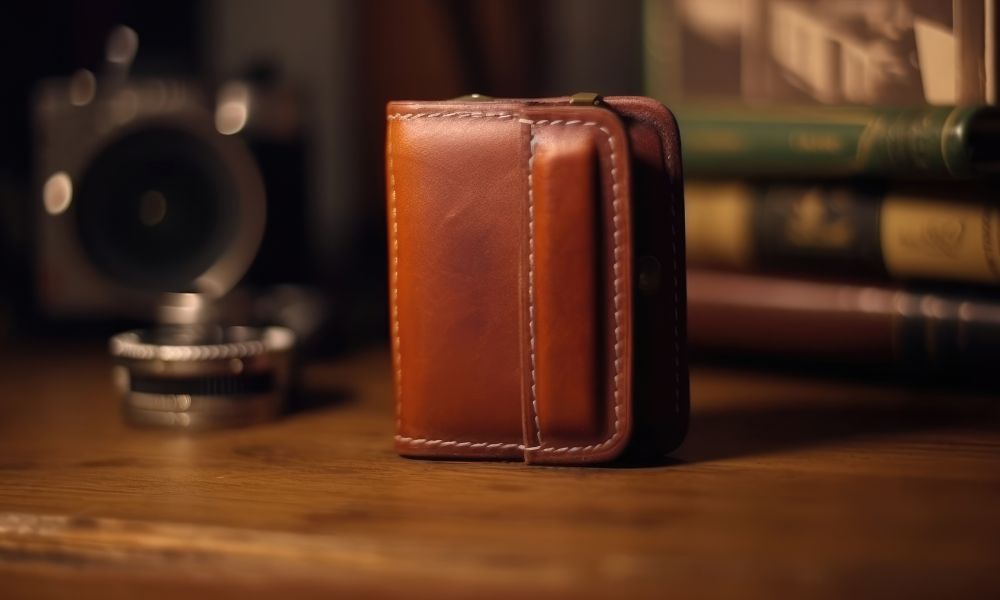In the contemporary world, wallets are essential accessories that play a vital role in our daily lives. These seemingly simple but invaluable tools have a rich history that dates back centuries, changing and adapting along the way. The story of the wallet is a fascinating journey through time, culture, and innovation. In order to properly appreciate this everyday item, you should explore the history and evolution of the modern wallet, from its humble beginnings to the cutting-edge gadget you know today.
Ancient Origins of the Wallet
While many people know the wallet for what it is today, its origins date back to ancient times. The first known wallet existence belonged to Otzi the Iceman in 3300 BC. This fascinating fact of human history tells us that people have always needed a solution to carry their essential belongings!
Renaissance Era Wallets
During the Renaissance period in Europe, ornate and decorative coin purses became fashionable. These purses were designed using silk, velvet, or fine leather and worn to symbolize status. Artisans commonly decorated them with embroidery, beadwork, and other gems. This marked the beginning of using wallets as accessories or outfit enhancers, laying the groundwork for many of the fashionable wallets or clutches seen today.
The Wallet's Transformation in the Modern Era
While early humans brought about the concept of the wallet thousands of years ago, it's clear that the accessory has come a long way from its ancient origins. Let's take a closer look at how wallets have evolved in the modern era.
The Bifold Wallet
The 19th century marked a significant shift in wallet design with the invention of the bifold wallet. This well-known wallet features two halves with compartments for bills, coins, and cards. It was a major shift from earlier designs that often included drawstrings, clasps, or pouches. Bifold wallets became more practical for everyday use and set the foundation for the modern wallet's development.
Brands and Logos
The late 19th and early 20th centuries saw the rise of branding and logos in the world of wallets. Companies like Louis Vuitton and Gucci began producing high-quality leather wallets that prominently displayed their brand names. This added a touch of luxury to wallets and paved the way for designer wallets to become sought-after fashion accessories.
Credit Cards
The emergence of credit cards in the mid-20th century brought a significant change in how people carried money. The introduction and widespread use of credit cards reduced the need to carry large sums of cash. As a result, wallets began to feature dedicated card slots, a trend that continues today.
Modern Wallet Features and Functionality
Today's wallets are versatile and functional accessories designed to accommodate a wide range of items and serve various purposes. Some of their key features and functionalities include the following.
Card Slots
Most modern wallets have designated slots for credit, debit, and identification cards. These slots will help keep your items organized and easily accessible.
Bill Compartments
Bill compartments hold paper money neatly and securely. They often feature various configurations to accommodate different denominations and types of currencies, making them ideal for traveling and everyday use.
Coin Pockets
While the use of coins has declined in many parts of the world, some wallets still include a coin pocket or pouch for loose change.
Clear ID Pouch
Many wallets have transparent windows for identification cards, allowing easy display of your driver's license or other cards without removing them from the wallet.
RFID Protection
Contactless payment methods and concerns about identity theft have pushed designers to create a means of RFID protection. Many wallets now have RFID-blocking technology to secure your card information from scanning or stealing.
Minimalist and Slim Designs
In recent years, minimalist and slim wallets have gained popularity. These compact designs aim to reduce the bulk in your pocket while still accommodating essential items.
Various Materials
Modern wallets come in various materials, including leather, fabric, metal, and recycled materials. The choice of material often reflects the wallet's durability, style, and price.
Purchasing Your Modern Wallet
Selecting the ideal wallet is about more than just making a fashion statement; it's about making a practical choice that can greatly impact your everyday life. To help you make an informed decision on a wallet supplier, consider the following factors.
Style and Material
Choose a wallet style that suits your taste and needs. For example, if you prefer a casual and lightweight option, consider fabric wallets that come in various colors and patterns to match your desires.
Functionality
The right wallet should cater to your daily requirements. Bifold wallets are suitable for those who carry a small number of cards and prefer to fold their dollar bills neatly, whereas trifold wallets are good for those who need more card slots. If you deal with coins regularly, consider a wallet with a dedicated coin pocket.
Capacity and Features
Be sure that your chosen wallet has the capacity to hold all your daily essentials. Consider the number of cards, bills, and items you need to carry. Size and weight matter, too; your wallet should fit comfortably in your pocket without creating unnecessary bulk.
The Future of Wallets
Wallets have an exciting future ahead of them that will advance with technology and innovations. Here are some examples of features that wallets may include in the coming years:
- Biometric wallets: The integration of biometric authentication methods, such as fingerprint or facial recognition, could make wallets even more secure.
- Smart wallets: While some smart wallets are already on the market, offering features like GPS tracking or Bluetooth connectivity, there are even more advancements still to come.
- Environmental sustainability: As environmental concerns grow, there is a rising demand for sustainable and eco-friendly wallet materials. Recycled and sustainable materials are likely to become more common in wallet production.
The history and evolution of the modern wallet clearly display its remarkable transformation over time. From the early bifold wallets to the sleek, multifunctional accessories we see today, the wallet has continued to adapt to meet society's changing needs and preferences. As technology advances, we can expect even more exciting developments in the world of wallets. Whether they are physical, digital, or something entirely new, wallets will remain a fundamental tool for managing our personal and financial belongings for years to come.


